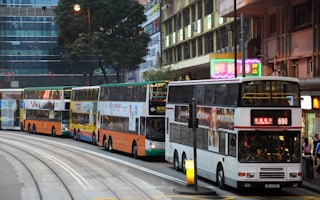Encouraging people to abandon their cars and use public transport or walk or cycle around cities offers the “least pain, most gain” way to cut air pollution from traffic by 2050, a new international study said on Wednesday.
The report, by the University of California and the Institute for Transportation and Development Policy (ITDP), proposed governments expand rail and bus transport and ensure cities are safer for pedestrians and cyclists.
Researchers found that a radical change in the way people get around cities could cut carbon dioxide emissions from urban passenger transport by about 40 percent by 2050 and save $100 trillion in public and private spending.
Michael Replogle of ITDP, a co-author of the report “A Global High Shift Scenario”, said transport, driven by a rapid growth in car use, had been the fastest growing source of carbon dioxide emissions in the world.
“
It is clear that the success of developing good public transport in wealthy countries has come by governments establishing systems for greater private investment in public transport
Michael Replogle, co-author of the report ‘A Global High Shift Scenario’
“While every part of the global economy needs to become greener, cleaning up the traffic jams in the world’s cities offers the least pain and the most gain,” said Replogle.
Replogle said better access to public transport would also foster economic opportunities, providing the poor with better access to employment and services - and the private sector had an important role to play.
“It is clear that the success of developing good public transport in wealthy countries has come by governments establishing systems for greater private investment in public transport,” he told the Thomson Reuters Foundation.
“That has not been happening as effectively in much of the developing world, but this report describes the framework in which it could happen.”
Carbon dioxide emissions are likely to increase fastest in developing countries because of growing wealth and sprawling urban populations.
United Nations figures released this year show that 54 per cent of the world population lives in cities and this figure is forecast to rise to 66 per cent by 2050.
Indian emissions, for example, are expected to leap nearly eight-fold to 540 megatons by 2050 from 70 megatons now but the researchers found this rise could be reduced by more than a third if cities managed to cut down car use.
Similarly, projections showed that in China emissions could be cut by almost a half if bus and metro systems were developed extensively.
Replogle said initiatives similar to those proposed were already happening in countries like Mexico and Colombia, which have plans for comprehensive urban transport programs.
“The bottom line message is that to address climate change we really need to undertake all of the measures that are feasible to help us reduce global warming pollution,” Replogle said.
“We particularly need to take rapid action on things that support sustainable development for low and moderate income countries so that they can realize their economic aspirations.”








